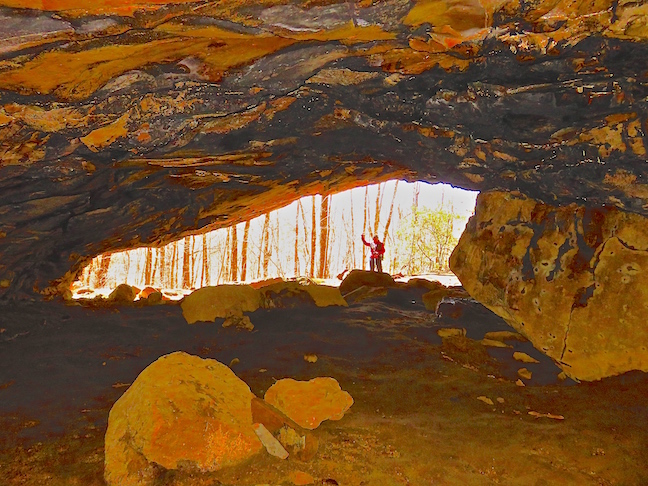I was curious about DeSoto Falls’ name and found that Hernando de Soto Left Tampa, FL in 1540 with 600 conquistadors on a 4,000-mile trek north that included South Carolina, North Carolina, Tennessee, Mississippi, Arkansas, Texas, Louisiana and ALABAMA. Along the way, the Spaniards lost some of their horses, pigs and huge, fighting dogs, which were the first in the New World. They also shared smallpox, which devastated the natives.
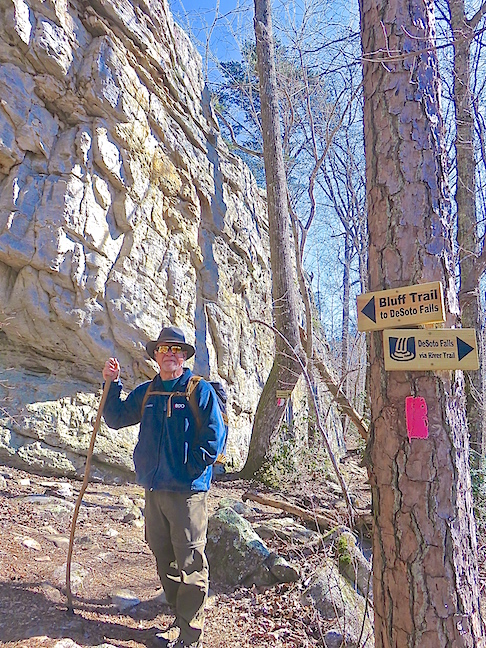
We chose the Bluff Trail to the base of the falls. It was a rocky path along the bottom of towering cliffs.
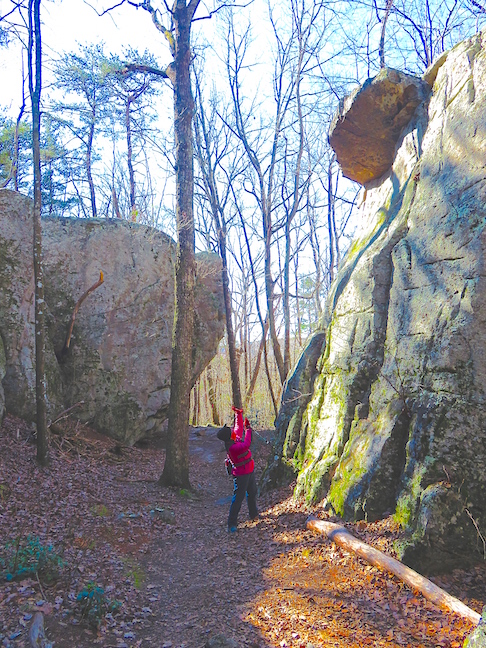
It was not lost on us that the challenging rocks on the boulder-strewn trail fell from the sheer bluffs above.
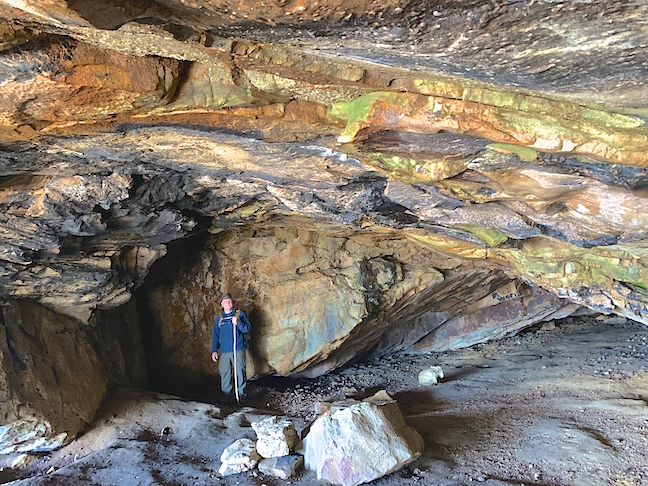
Water constantly drips from the ceiling of the Icebox Cave creating brilliant colors from leached minerals. I saw photos of icicles hanging like stalactites from the ceiling, but it was 58-degrees when we visited.
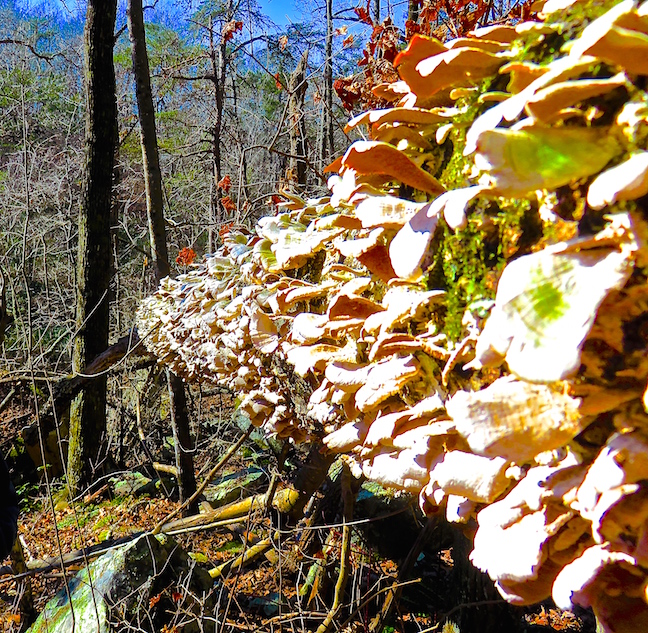
Gorges with waterfalls and rivers always have an abundance of fungi. This 100-foot-long deadfall was completely coated with mushrooms.
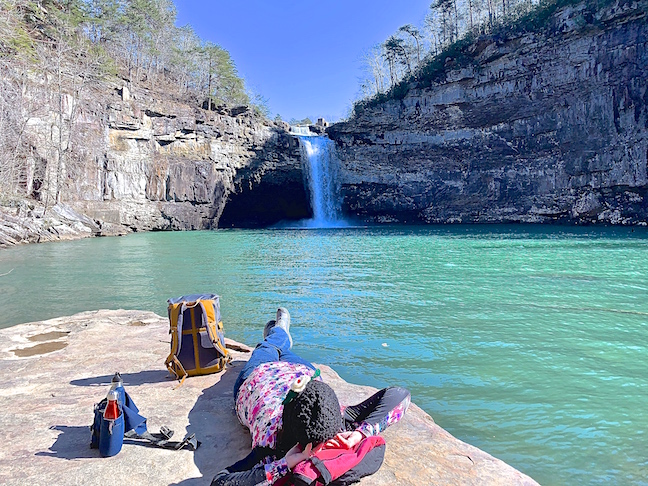
The trail ends at a perfect rock for relaxing and lunch in the giant amphitheater carved out by the Little River’s West Branch. An overlook in the picnic area and park above the falls was closed for upgrading. 104-foot-tall DeSoto Falls is one Alabama’s most visited outdoor attractions. Built in 1925 for hydroelectricity, the 20-foot-tall A. A. Miller Dam at the top of this triple falls creates a small lake for tourists.
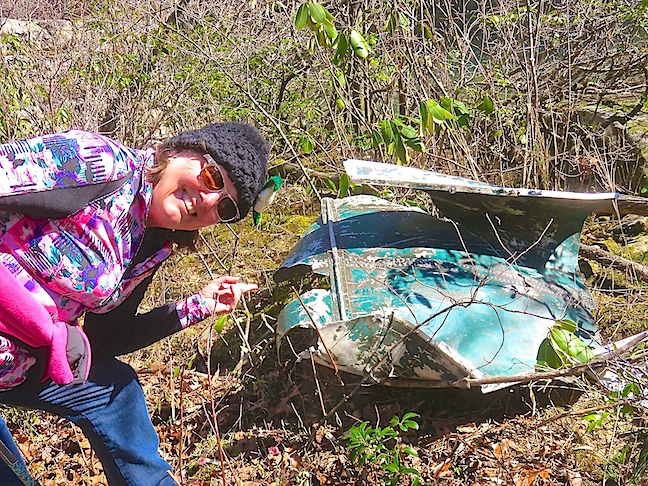
We took the lower trail along the river’s edge on the way back. This twisted chunk of a rental canoe illustrates the danger of going over the top of the dam and down the falls.
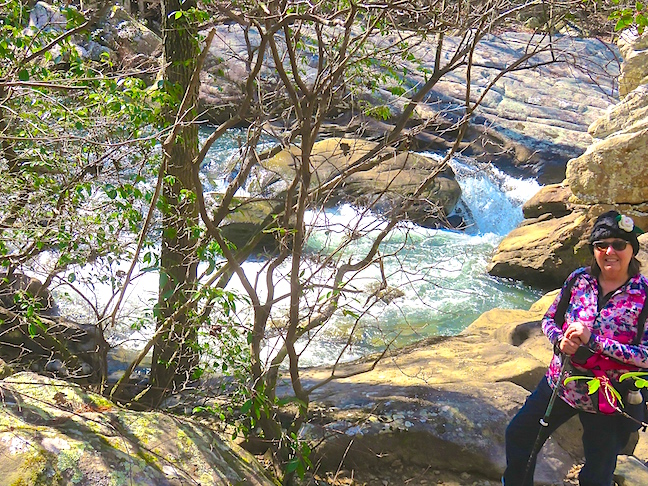
The Little River runs entirely along the top of Lookout Mountain. The 17-mile-long East Fork and 25-mile-long West Fork come together and flow another 23 miles through Alabama’s deepest gorge. We’ll be back downriver to visit Little River Falls and Grace’s High Falls, which at 133 feet is Alabama’s highest.


